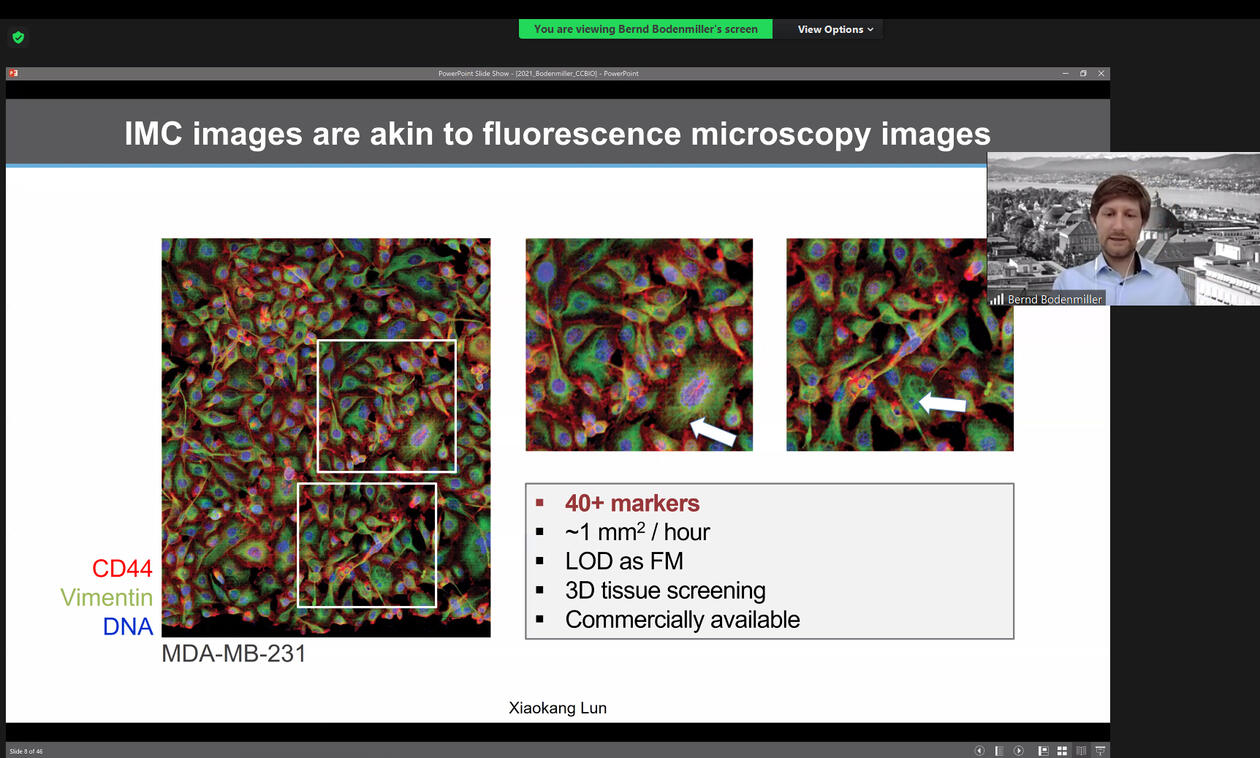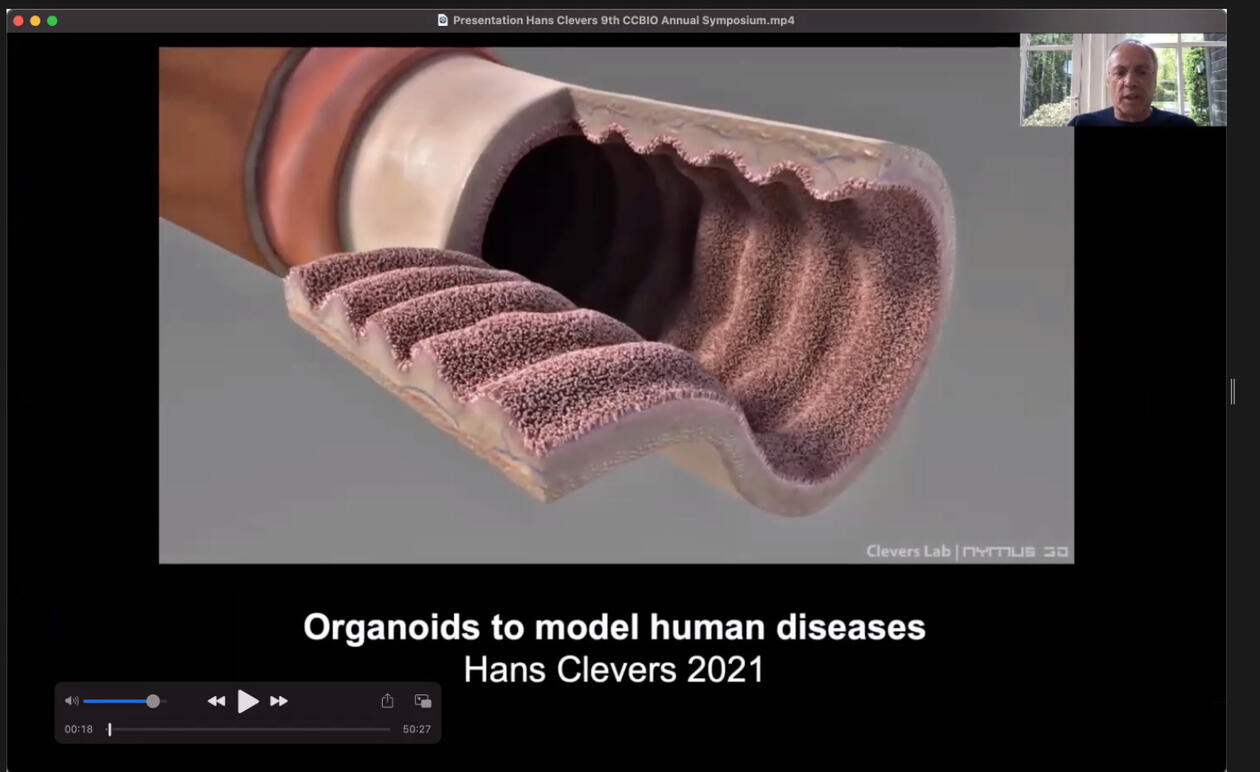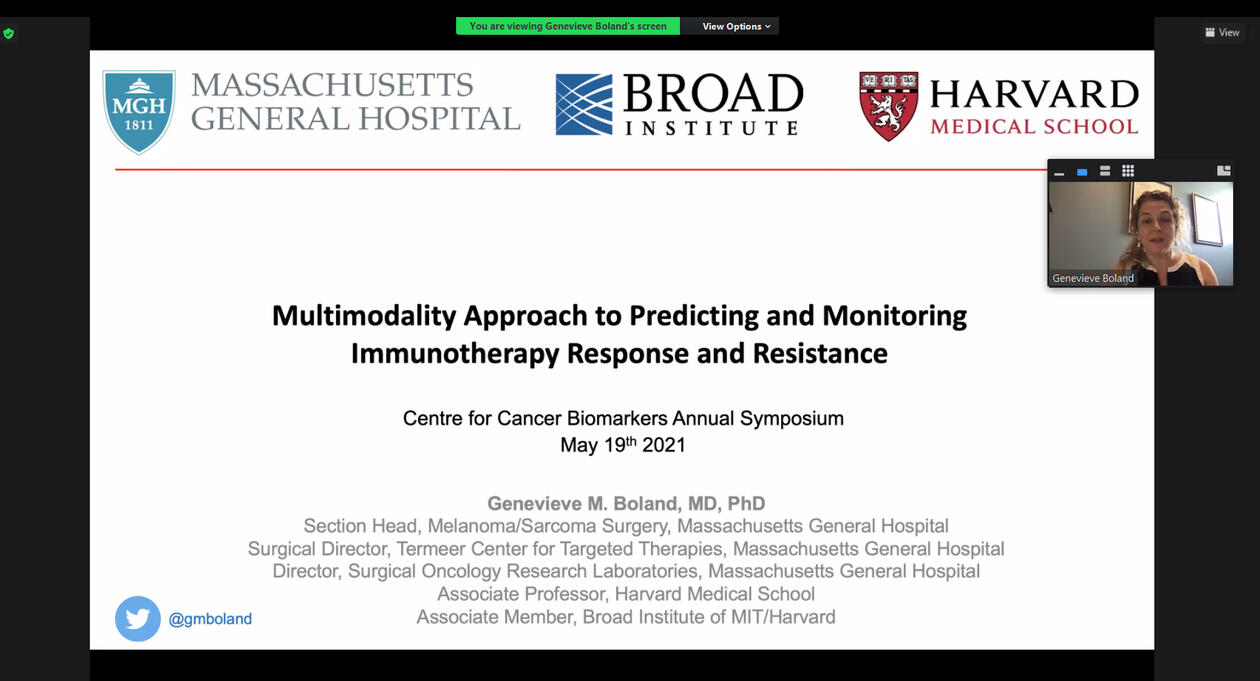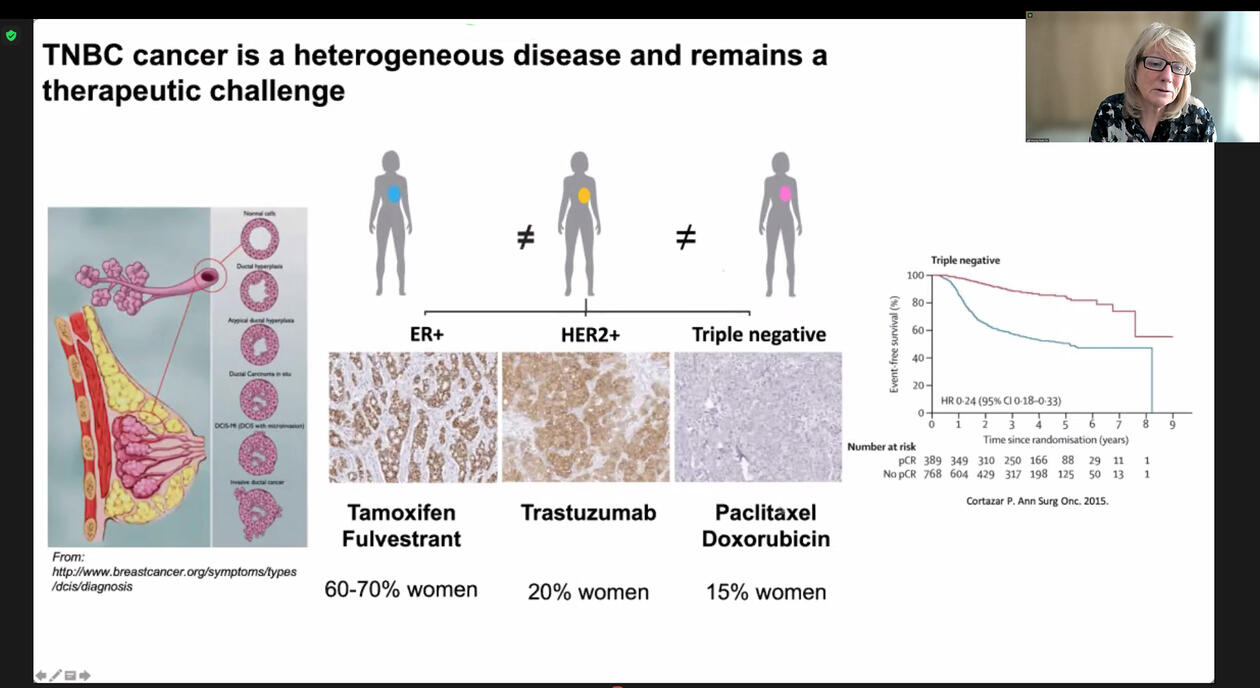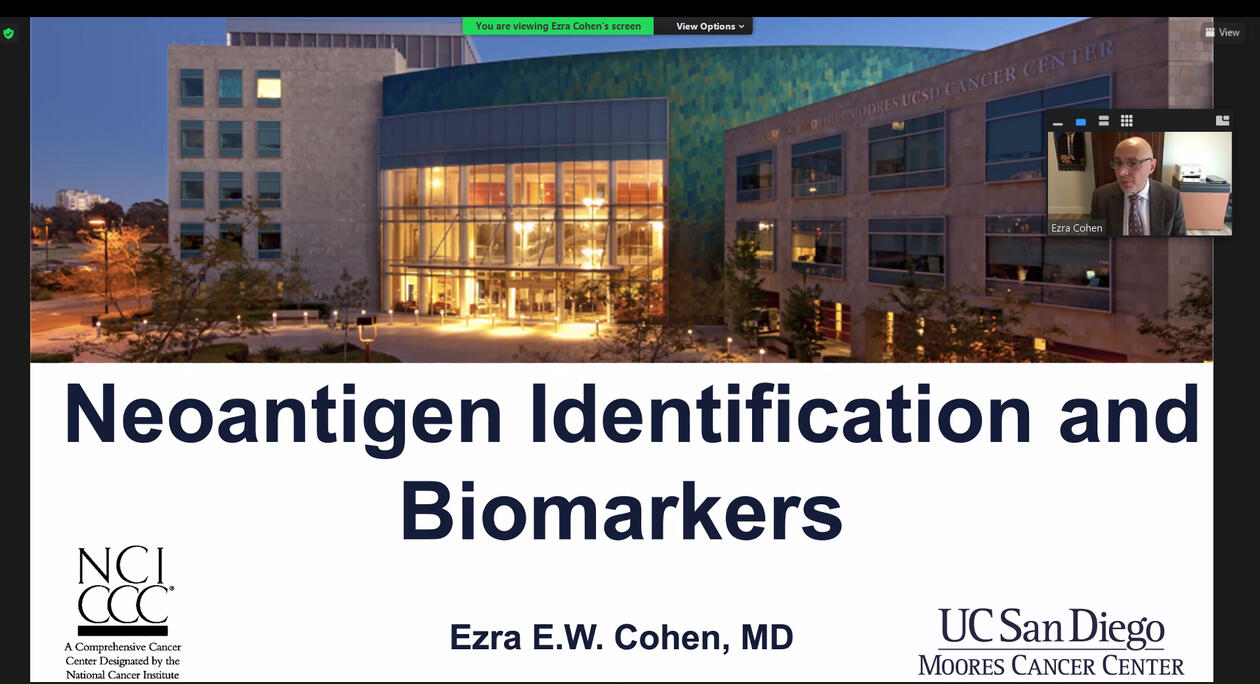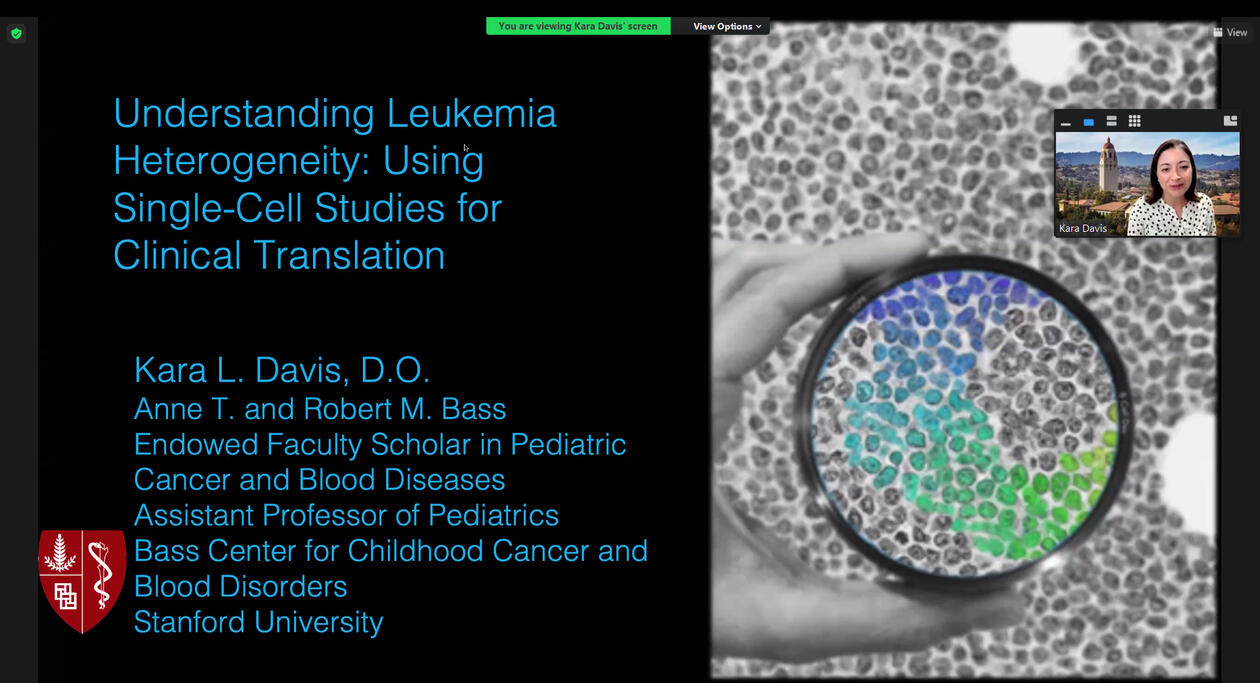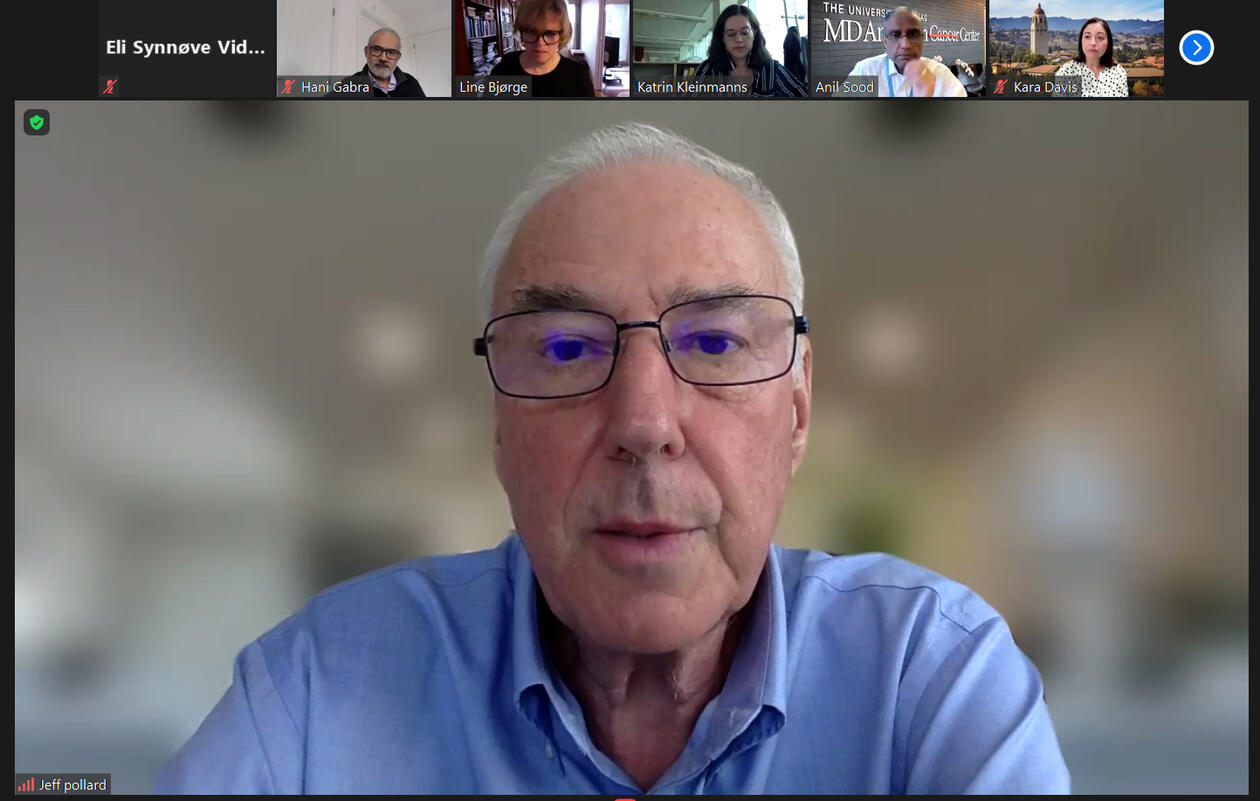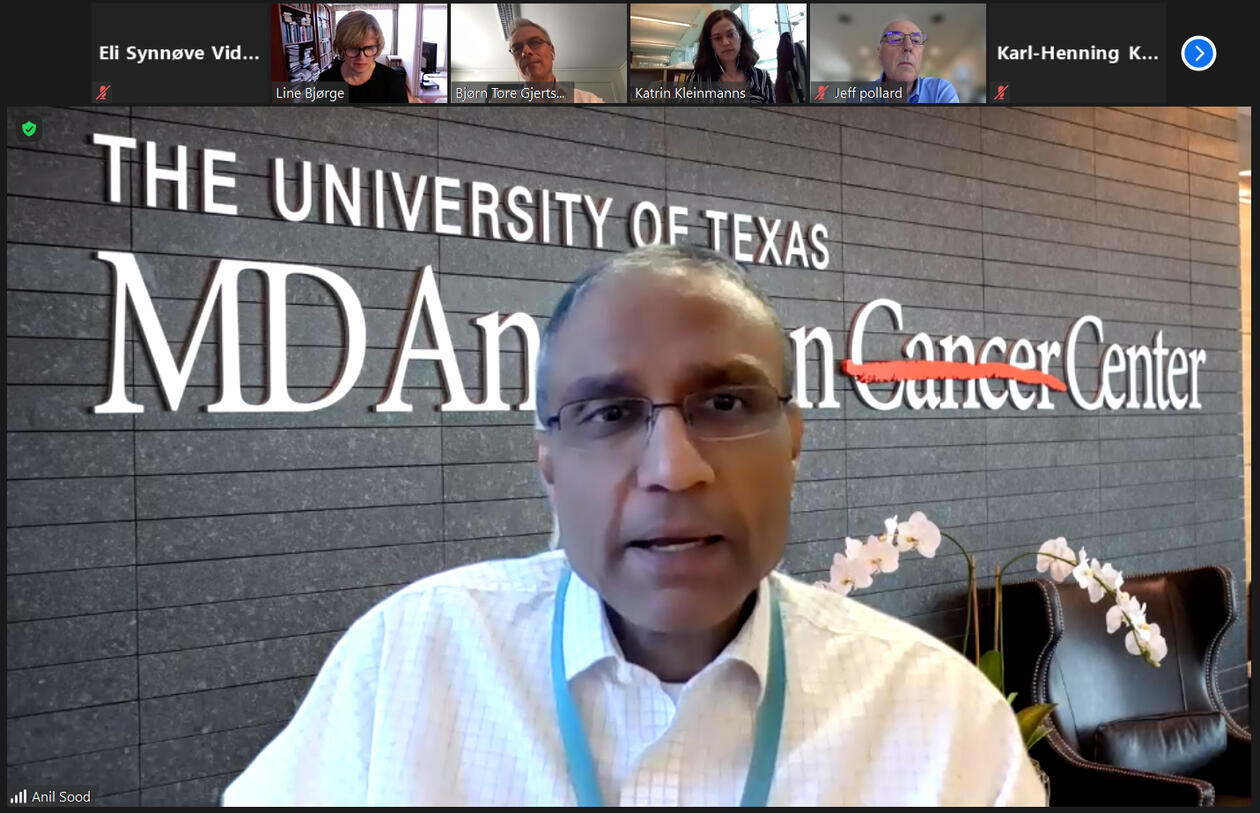Top scientists at fully digital CCBIO Symposium (2021)
A broad range of renowned international cancer scientists gave talks at the 2021 CCBIO Annual Symposium, which for the very first time was held as a fully online event.

Main content
331 participants in an international mix were participating at the symposium May 19 and 20, having the option to hop in and out of the lectures of their choice. The program started 11.00 PM each day to accommodate to time zones for international colleagues.
Professional updates on many cancer fields
The program was broadly composed and covered various fields and perspectives within cancer research.
"We have an exceptionally good program spanning two days, featuring «big guns» in several cancer research fields," says CCBIO Director Lars A. Akslen.
He thinks the fact that the meeting was entirely digital made it easier to secure top scientist names. Normally, the participants gather in idyllic surroundings at Solstrand Hotel outside of Bergen. Akslen hopes the research communities will be able to meet in person at Solstrand in the coming years, supplemented by live streaming.
Game-changing technology
Akslen among others hightlights one of this year’s speakers, Bernd Bodenmiller from the University of Zürich. Bodenmiller is a pioneer in advanced tissue analysis through imaging mass cytometry. The new technology, also taken into use by CCBIO some years ago (lenke til Hyperion her?), allows for more complex investigations of intact tumor tissue. This enables personalized medicine, helping in finding the right drug for the right person. In 2019, Bodenmiller received the prestigious Friedrich Miescher Award for this groundbreaking work.
Living cancer biobanks
Hans Clevers from the University of Utrecht contributed with an intriguing talk on organoids. This is tissue material derived from patients which can be grown in laboratories and act as «representatives» for large tumors. A single stem cell can be built upon in a petri dish, making many stem cells which eventually, and surprisingly quickly, constitute a mini version of the original tissue. Such analysis opens up for more detailed and personalized diagnostics and treatment of cancer, as the organoid can be used for testing whether a patient will or will not respond to treatment.
“Your actual cancer can be tested in the lab for drugs, before the drug is put into you,” Professor Clevers stated in his talk. This will save the patient for unnecessary side-effects and time for wrong treatment, much like we today can test a person’s bacteria for response to antibiotics. The application is not restricted to only cancers, as Clevers showed through his involvement in a recent project concerning COVID-19 (SARS-CoV-2). Organoids can be made from both cancerous and healthy cells, providing also an opportunity to grow healthy tissue for transplantation.
Possibilities and challenges of liquid biopsy
Klaus Pantel contributed with a talk on liquid biopsy, a term which he is considered to have invented. This concerns the analysis of tumor cells or products released from primary or metastatic tumor tissues into the blood or other body fluids. Different markers can reveal a lot of what is going on inside the tumor, and supplement the knowledge obtained by studying small tissue samples.
Over the past ten years, circulating tumor cells (CTCs) and circulating tumor DNA (ctDNA) have received enormous attention as new biomarkers and subject of translational research. Clinical applications include early cancer detection, improved cancer staging, early detection of relapse, real-time monitoring of therapeutic efficacy and detection of therapeutic targets and resistance mechanisms. Pantel discussed a conceptual framework of CTC and ctDNA assays and pointed out current challenges, showing interesting examples and results from his group’s research projects. A project is also ongoing with CCBIO PI Karl-Henning Kalland, soon to be published.
Pantel encourages all to check out the Cancer-ID EU Consortium with 40 EU partners, which is open for new members.
Angiogenesis as therapeutic target
Lars A. Akslen also highlights the talk from Anil Sood, who talked about rapidly expanding treatment options for ovarian cancer, particularly focusing on angiogenesis as a target. Angiogenesis is the process by which new blood vessels form, allowing the delivery of oxygen and nutrients to the body's tissues, and thereby also to the cancer. Targeting angiogenesis could inhibit the tumor’s ability to grow. Understanding the mechanisms of adaptive resistance to anti-angiogenesis drugs is vital to overcome this challenge. Most of the angiogenesis inhibitors currently in clinical use target a signal protein called VEGF. Sood explained how their studies show that extravascular platelets play an important role in accelerated tumor regrowth following anti-VEGF therapy, and that FAK (focal adhesion kinase) inhibition may represent an important combination with anti-VEGF drugs. Dual targeting of VEGF and the protein Delta-like ligand 4 (DII4) may also improve therapeutic outcomes.
New principles in cancer therapy
"The program covers the spectrum from biological understanding of tumors to mapping of tumors prior to treatment, as well as new principles in cancer therapy," Akslen explains.
The speaker list also included Ulf Landegren on molecular tools for biomarker analysis in immune oncology, Lewis Au on determinants of anti-PD1 response and resistance in renal cell carcinoma, Morag Park on tumor zonation and immune microenvironments in triple negative breast cancer, Ezra Cohen on neoantigen identification and use as biomarkers and Genevieve Boland on multimodality approach to predicting and monitoring immunotherapy response and resistance, with interesting patient cases, emphasizing “the power of one” – studying one patient in depth. Perhaps we are not far from being able to detect and monitor cancer through simple blood tests?
We also got to enjoy Amir Aref’s story on utilizing technology developed in his work at IMT, via the Dana Farber institute, to the establishment of the first company in the world to 3D culture cancer cells, allowing for ex vivo tumor characterization. Jeffrey Pollard gave a talk on monocyte regulation in homeostasis and malignancy, and Kara Davis on understanding leukemia heterogeneity, using single-cell studies for clinical translation. Hani Gabra gave a talk on regulation of receptor tyrosine kinases by OPCML – biology and potential therapies, and CCBIO PI Dana Costea walked us through 3D organotypic models of human squamous cell carcinoma.
Speed presentations with young researchers
The usual poster presentations at the CCBIO Annual Symposium were not possible this time, but CCBIO still wanted to give the younger researchers an arena to present their research. Hence, in addition to regular lectures and discussions, the program has also made room for "speed presentations" where young researchers could present their projects in only 3 minutes each. The program accommodated for 16 young researchers both days, 32 altogether, and the audience could vote on Best presentation each day. In addition, a committee selected two Best presentations. Congratulations to:
Audience award May 19: Luka Tandaric, for The impact of combined use of immune checkpoint inhibitors in the phase II umbrella trial NSGO-OV-UMB1 / ENGOT-OV-30 in patients with relapsed ovarian cancer – A presentation of the translational research protocol
Committee award May 19: Marta Espevold Hjelmeland, for Establishment of patient-derived endometrial cancer organoids
Audience award May 20: Katrin Kleinmanns, for Humanized patient-derived xenograft models for the evaluation of immunotherapy in ovarian cancer
Committee award May 20: Karen Gissum, for Between illness and disease: Ovarian cancer lost in translation
As CCBIO Co-Director Bjørn Tore Gjertsen summarized in his closing remarks, he was highly impressed with the display of high quality, innovation and entrepreneurship from the young researchers.
"This year's symposium has been different but with several outstanding presentations and lively discussions. I am convinced that certain keynote lectures, and the session on speed presentations, should be complementary formats even when we go back to on-site participation," Akslen concludes.
Click here to read more about the symposium and see the program.
